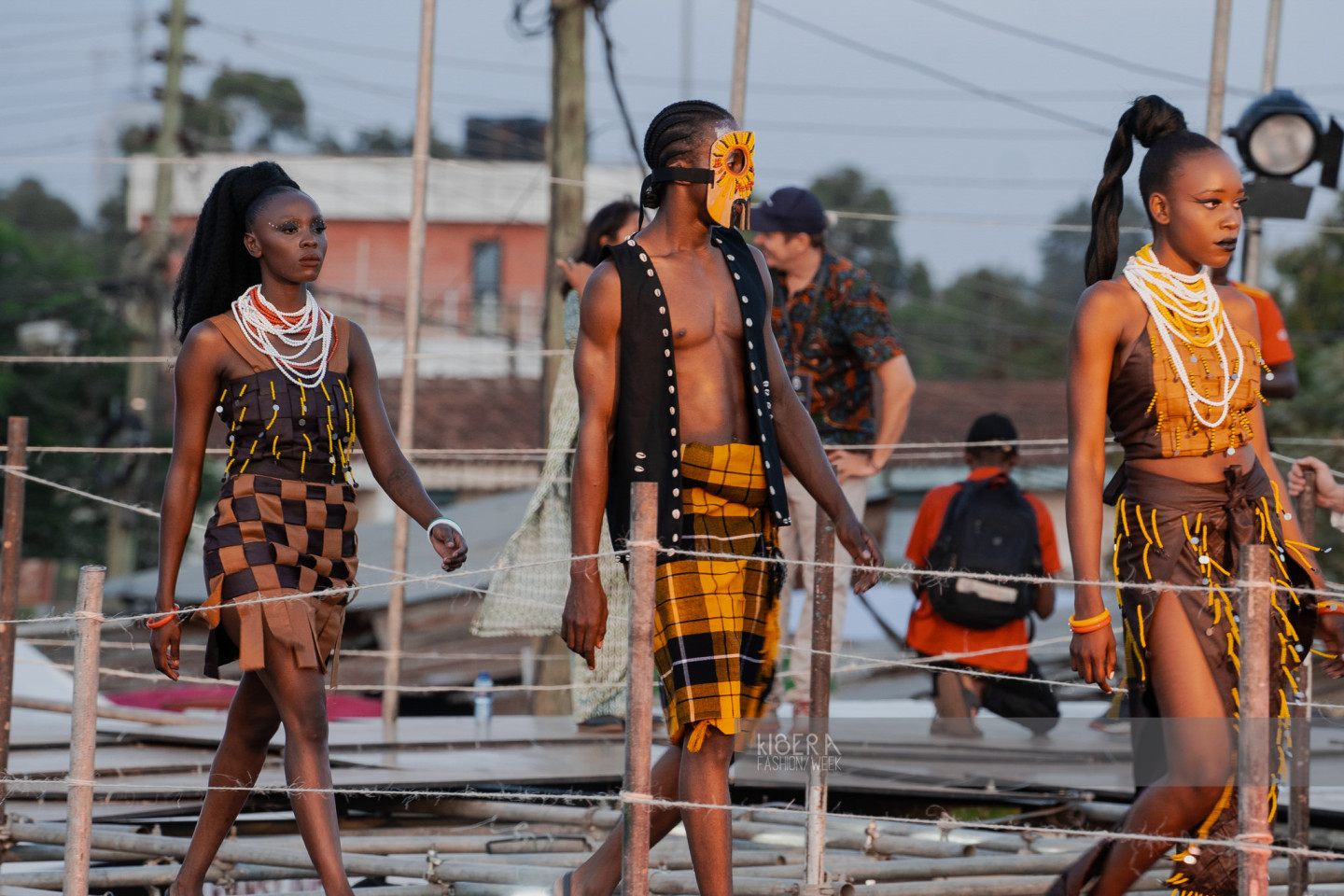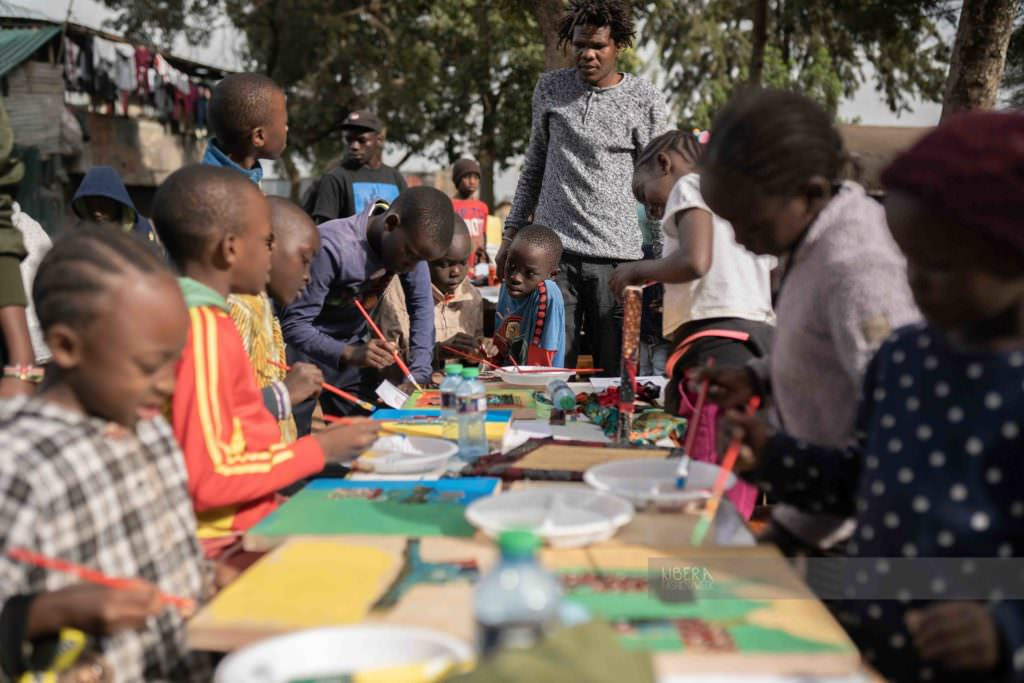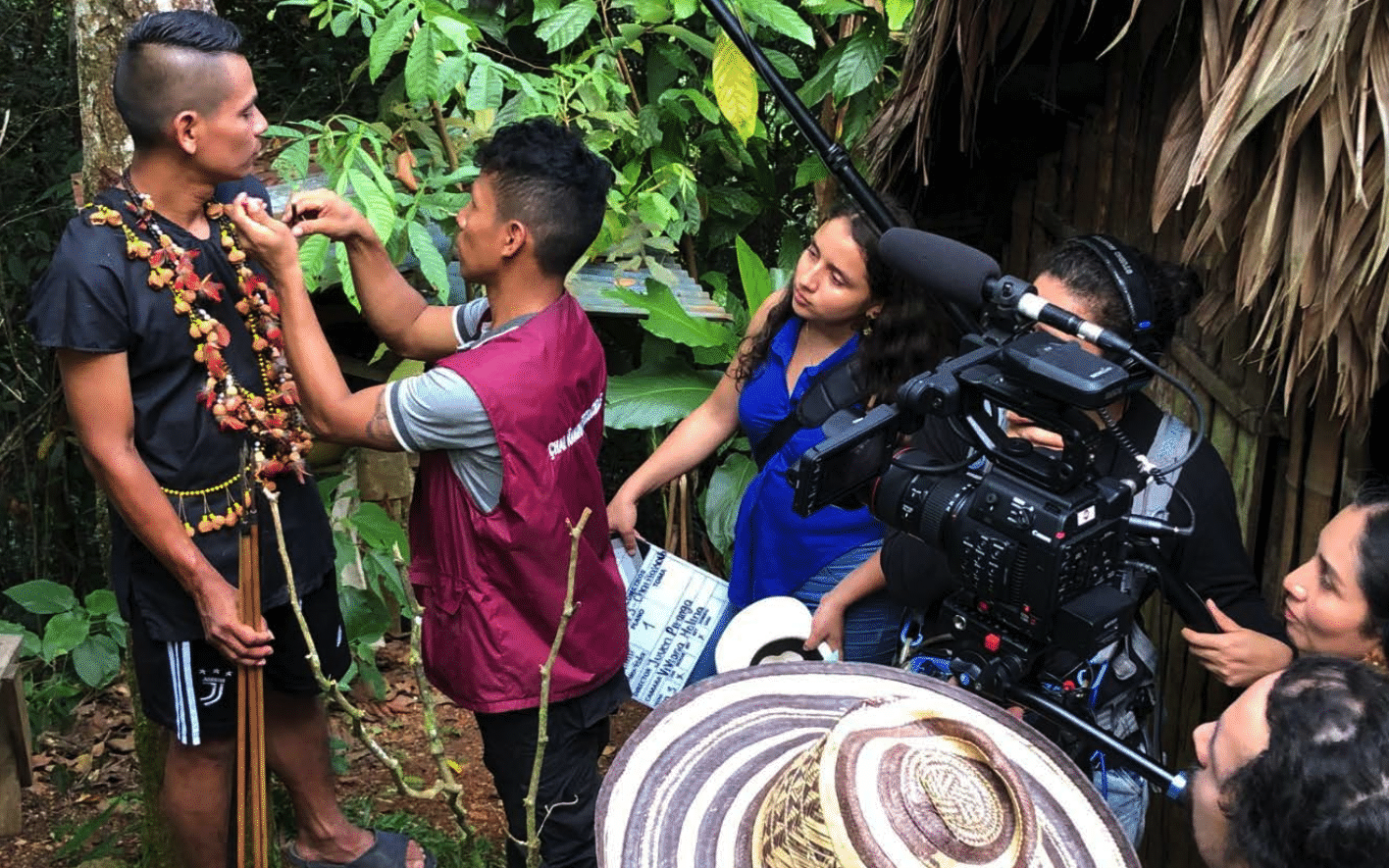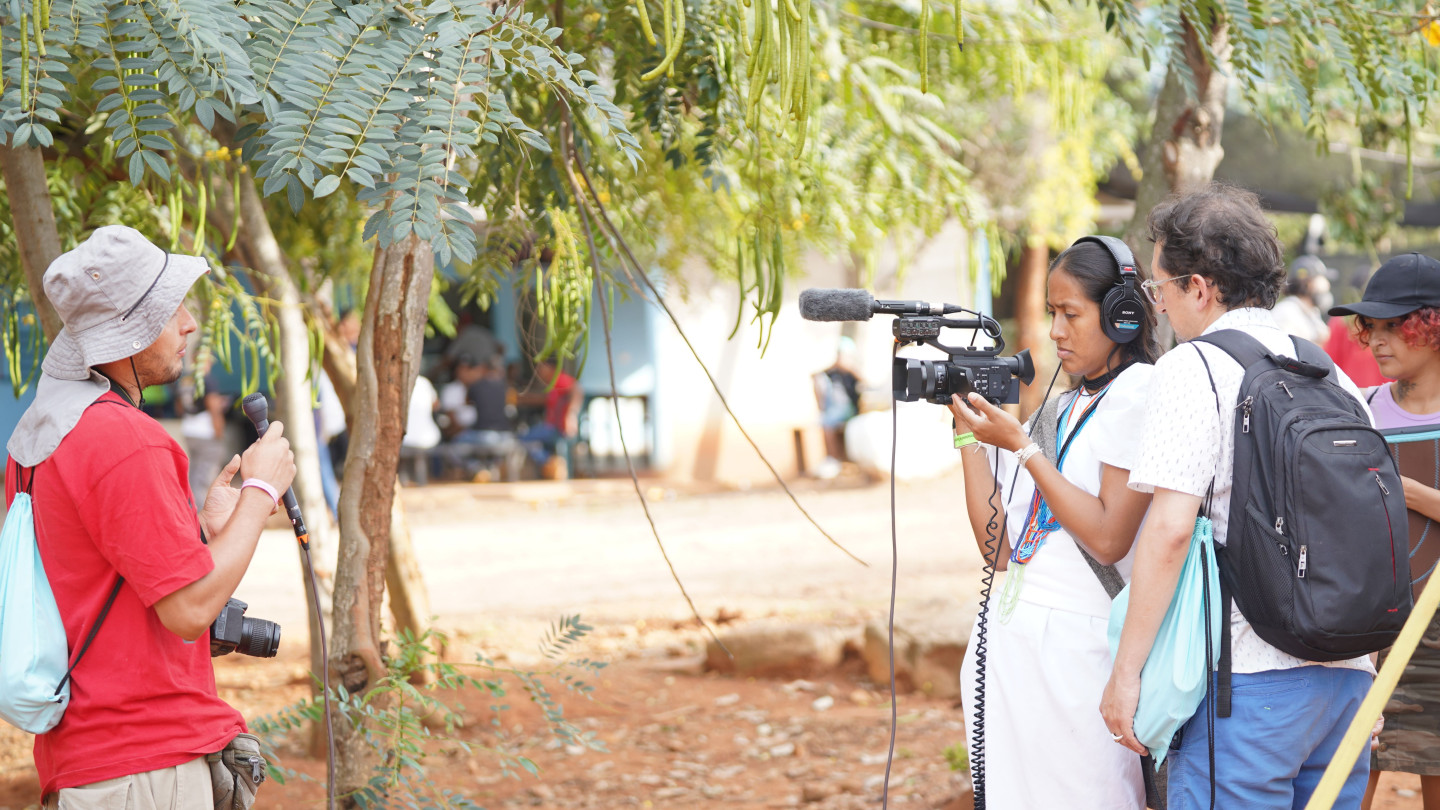




"Our biggest success: the fact that there was a story told beyond films and guests"
On 29 and 30 April, the European Spaces of Culture team was joined by Fine Acts as part of the Spaces Lab series to facilitate a session on hope-based communication, supporting the project teams working towards implementation of their projects from June 2024.





To build community among the European Spaces of Culture project teams, the EUNIC team has been hosting Spaces Labs until the end of April. The Labs have gathered partners from the newly selection projects, so-called Spaces Alumni from previous projects sharing their experiences and insights, and external experts.
The third and last Lab gave representatives of the project teams the chance to come together, learn and exchange about their experiences with hope-based communication. SImilar to a Lab session hosted last year, It was co-created and led by Fine Acts, a global creative studio for social impact that operates across issues and borders and believes in the power of art and play. Together with the Fine Acts team, the project teams explored the principles of hope-based communication and how they can be applied to the different projects.
What is hope-based communication?
Svetla Baeva and Yana Buhrer Tavanier from the Fine Acts team gave the project teams a detailed overview of the principles of hope-based communication and the work of Fine Acts in consulting and training civil society organisations in creative thinking, utilising art and embracing play as a tool for social change, highlighting many examples of what works (and what does not!). Hope-based communication is an open-source methodology designed by communication expert Thomas Coombes. It is a pragmatic approach to making communication around human-rights topics more effectively by focusing on uniting the audience with clear values and creating a hopeful vision for the future. Strong visuals are key in supporting a hopeful message.
But why do we need hope? While the idea of hope is rooted in the idea that the future might bring positive change, it must not be confused with "simply being happy". It is a "pragmatic strategy for change" and does not ignore pain and suffering but is about "finding a way that our audiences can constructively and respectfully engage with the experiences of others". This means that societal problems and human rights violations can and should still be talked about, but be framed in the context of the solutions. A hope-based message should get the audience to think about how things could be instead and inspire them to take action.
The five shifts
Thomas Coombes promotes five shifts that can be made to improve communication based on hope:
- From "fear" to "hope";
- From "problem" to "solution";
- From "against" to "for";
- From "threat" to "opportunity";
- From "victim" to "hero" or "human"
Hope-based communication for European Spaces of Culture
The principles of hope-based communication are much in line with what European Spaces of Culture stands for: finding and testing innovative collaboration models for cultural relations and building partnerships based on dialogue, equality, mutual listening and learning. Already in previous rounds of European Spaces of Culture projects, project teams have been encouraged to familiarise themselves with the principles of hope-based communication and integrate them in their exernal communication plans. With the support of Fine Acts as experts on the subject, the lab showed how applying hope-based communication can look like in practice for European Spaces of Culture.
As alumni of last year’s projects, the lab welcomed Historias En Kilómetros’ Nicolás Cuellar and Paola Andrea Díaz, initiatiors of the first International Community Film Festival in Colombia, which imagined and realised a place where historically marginalised communities in Colombia teach an international audience what it means to build peace through art. The festival’s ambition, nature and communication brought forward many of the hope-based shifts above. The festival aimed to not necessarily discuss the end of war, but rather discuss peace. With that, “the festival became more than a festival, but a laboratory of peace.”
Putting communities at the core of any strategy is the way to have a powerful communication. What are their aspirations, what moves them, what they want to achieve? As with the whole festival, the different communities were central and instrumental to the story of the project. The communities, made up of ex-combatants in the guerilla war, wanted to change the narrative about the transformation of the country and society. The festival therefore became an example of how communities want to express themselves and tell their stories, which the alumni explained led to their biggest success: the fact that there was a story told beyond films and guests.
The festival is an example of how communities want to express themselves and tell their stories, which was our biggest success: the fact that there was a story told beyond films and guests.
Nicolás Cuellar, Historias En Kilómetros, initiators of the first International Community Film Festival in Colombia
The public the festival tried to reach was not only the community. It was therefore very important for the team to listen to everybody all the time: “Not every idea is great, but every idea is worth of being heard.” The word ‘Utopia’ used in the festival’s campaign came up during the long discussions that was had with the community. From there, the team started drafting concepts around images, showing that something amazing was about to happen, without clearly telling what. From there, the ‘Utopia’ theme was concretised more and more, ultimately leading to three acts (one per festival day):
- Act I - Who We Were: A journey through the process of laying down weapons of the former FARC and their transition to civilian life
- Act II - Who We Are: A day that will reveal how a community is built and how community cinema is produced
- Act III - Who We Will Be: A day to talk about the new generations and the dream of a dignified home
Another strong example of the application of hope-based messaging to European Spaces of Culture, is the Kibera Fashion Week project in Kenya. The project has been building a platform for local creatives in Kenya to redefine fashion, share new methods for sustainability and bring together stakeholders from around the world to challenge unethical and exploitative consumption. With a hope-based communication strategy, the project relied heavily on visuals, in the form of videos, to capture the success of the project activities and show the heroes of the project. It opens up the possibility for the local community to express themselves and set their own agenda for sustainable fashion.
While Kibera is often portrayed as a place of hopelessness in need of help and so-called “development aid”, it is in fact a diverse metropolis, booming with creativity and constantly evolving and innovating. The project has been firmly conveying the message to the world that the world can learn a lot from the people of Kibera and that they possess the skills to become pioneers in a sustainable and ethical creative industry. The project has created opportunities, built knowledge and skills within the community, while telling a different story about Kibera: it is a diverse neighbourhood, booming with creativity and constantly evolving and innovating.
There is no barrier if you believe in your talent and take the next step. I want to encourage and create beauty, where people don’t expect it.
David Avido, initiator of the Kibera Fashion Week
Following the introduction to hope-based communication, the lab gave the opportunity to the project teams to brainstorm, in a short exercise, in a breakout room and come up with creative cultural actions, interventions or solutions linked to their project. The creative brainstorming was informed by the hope-based comms shifts covered during the session. Not all of these shifts are easy to make and require more in-depth work, but participants welcomed this first exercise to jump-start a hope-based communication strategy.
A big thanks one again goes to Fine Acts for leading this in-depth session on hope-based communication and the rich discussions with the teams!
